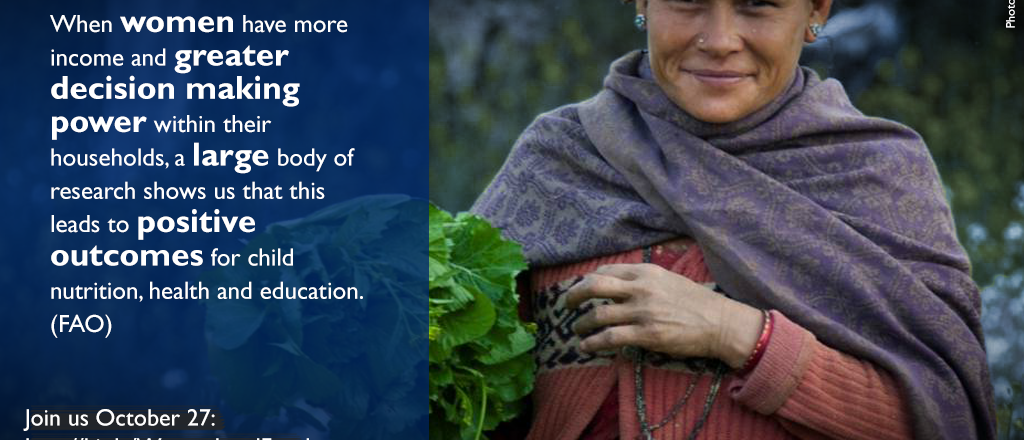At the October 27, 2015 Women, Land and Food Event there were more questions from our in-person and online audience than we were able to answer. We wanted to address this by answering some of the most interesting questions we received:
Question: What are some initiatives or projects by USAID to address women’s land rights in Africa?
Answer: One example is Rwanda where USAID supports the development of high-quality evidence-based research that examines gender rights in practice. The project helps inform citizens, NGOs and the government on how best to engage women and men to secure women’s land rights; what the barriers are to securing those rights; and policy implications for the country’s land reform efforts.
USAID projects also address women’s land rights in other regions. Some examples of USAID’s work on securing women’s land rights that you might be interested in include Kosovo, Tajikistan and Vietnam.
Question: Do we see the same sorts of returns on investment in tenure for women where livelihoods are pastoralist-based rather than agriculture-based? This is especially interesting because often pastoralist land ownership is communal. How can we overcome the challenges to grant women greater access to formalized partnerships in this type of land ownership scheme?
Answer: This is a very interesting question and an area where donors and civil society may need to dedicate further research. Some existing research that has addressed the challenges women face under pastoralist systems include:
- Fiona Flinton, “Sitting at the table: securing benefits for pastoral women from land tenure reform in Ethiopia”
- Elizabeth Daley, “Securing land rights for women”
- And the Maliasili Initiatives has some interesting work on pastoralist women in Tanzania
Question: Do you see ICT playing any role on LTPR especially for women and marginalized indigenous groups?
Answer: Yes, information and communications technology (ICT) can play an important role in expanding access to land administration services. One example of this is a USAID project that works with Tanzanians to map and record land rights – reducing the time and cost of formalizing rights to land. ICT can help in other ways such as to help improve transparency in the land sector, which reduces problems of corruption. It can also help by crowdsourcing important information about forest boundaries, locations of pastures and migration routes (for pastoralist communities) and help to identify water sources.
Question: Are your programs striving for gender equality or gender equity?
Answer: USAID’s program work to comply with sector-level best practices as well as with the Agency’s Gender Policy – this means that USAID programming should strive to promote gender equality and women’s empowerment. In the land sector, the Voluntary Guidelines on the Responsible Governance of Tenure of Land, Fisheries and Forests (VGGT) place strong emphasis on importance of gender equality and the need to respects women’s rights to property and housing, which are recognized under the Convention on the Elimination of all Forms of Discrimination Against Women (CEDAW) convention and its Optional Protocol.
Question: I was wondering, where did you work in Kenya and what were your experiences dealing with rigid gender norms around land ownership? What strategies did you employ?
Answer: In Kenya, USAID worked with villagers in Ol Posimoru to engage men and women, boys and girls in discussions about the rights that women hold under the 2010 Constitution and the roles and responsibilities of elders to uphold those rights. Male villagers spent time learning about the contributions women make to the well-being of the community and how women and girls would be able to contribute more to their communities and families when tenure rights were more secure. As a result of trainings and community engagement women were elected to serve as elders and now they a part of the local governance institutions. Read more about this project in Kenya.


